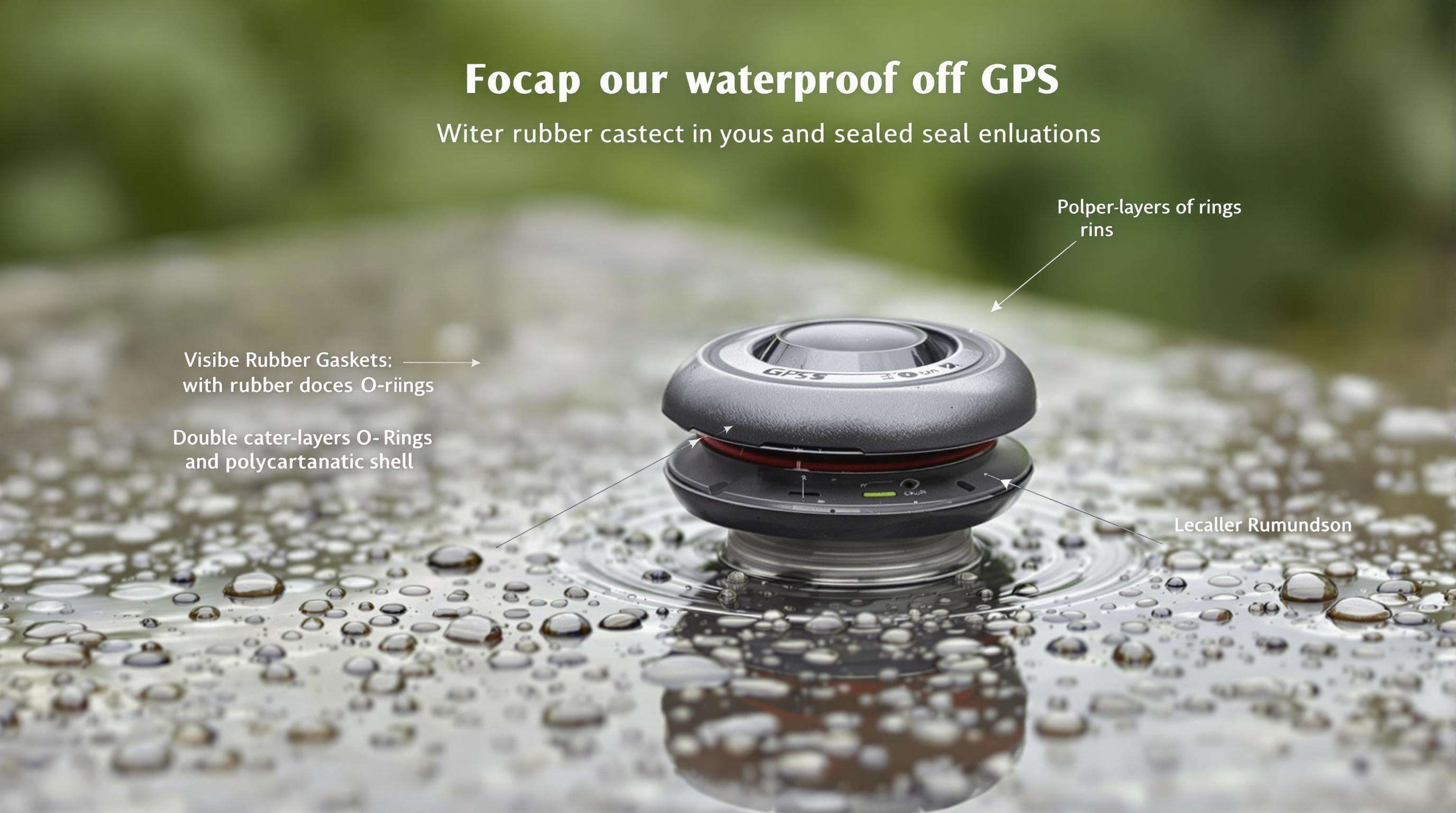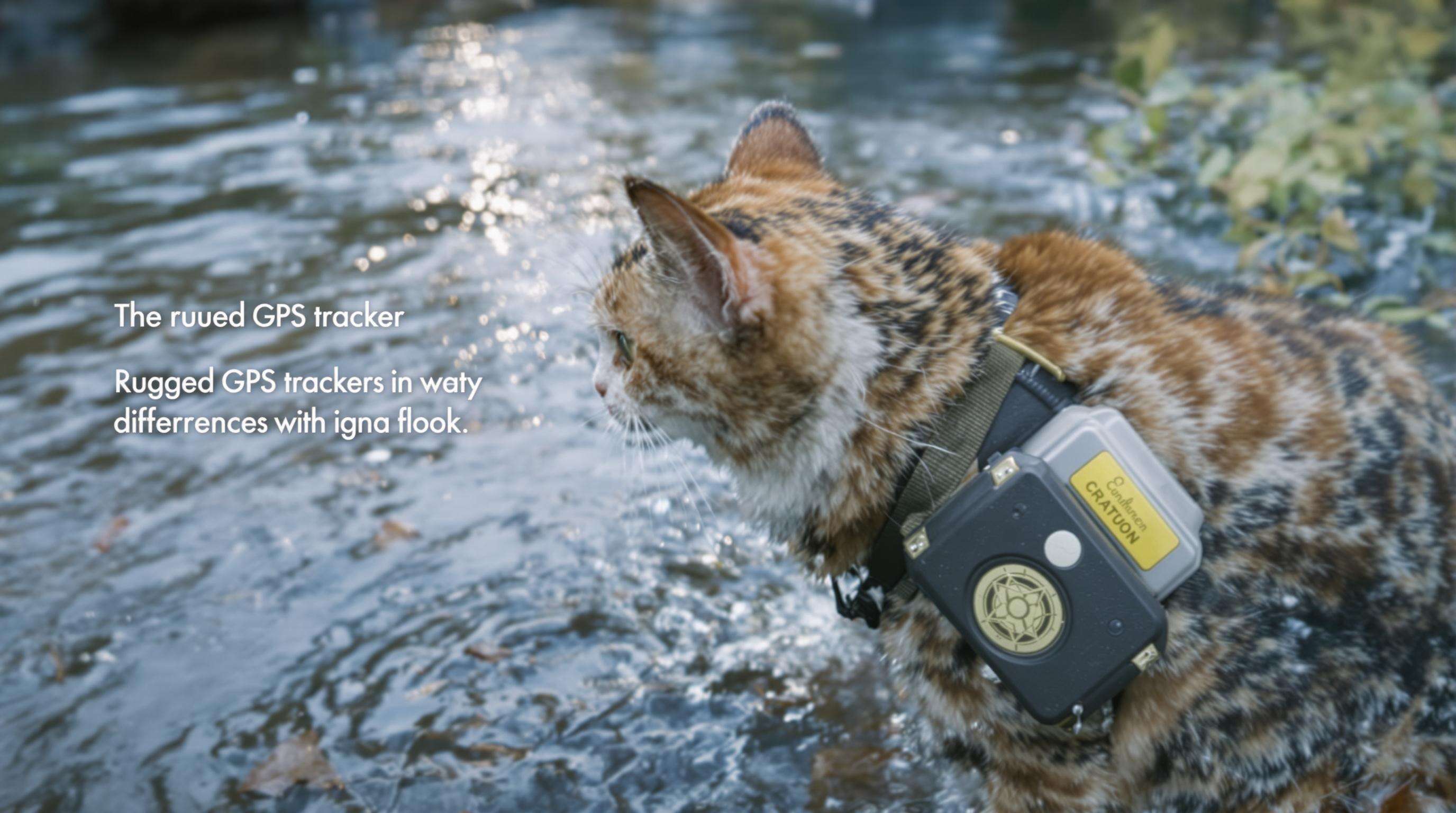מה גורם לעוקב החתול להיות חסין למים עבור הרפתקאות בפנ outdoors?
הבנת דירוגי ניקוז למשגרי GPS לקטגוריה
מהו דירוג ה-IP ואיך הוא משפיע על משגרי GPS לקטגוריה
דרגי הגנה מפני חדירה (IP) מודדים עד כמה מכשירים אלקטרוניים עמידים בפני מים ואבק. עבור משגרי GPS לקטגוריה, הקודים הללו - כמו IP67 או IPX7 - מציינים שתי הגנות עיקריות:
- ספרה ראשונה : עמידות בפני חלקיקים מוצקים (0–6)
- ספרה שנייה : עמידות בפני נוזלים (0–9)
ניתוח מ-2025 של משגרי GPS המובילים גילה כי 83% מהמכשירים עם דירוג IP67 ומעלה נותרו בתפקוד מלא לאחר חשיפה למים, לעומת 48% בלבד בדגמים ללא דירוג. עובדה זו מדגישה את חשיבות האישור לפי IP, במיוחד לחתולים החיים באזורי גשם או קרוב למקורות מים.
IPX7 מול IP68: ההבדלים המרכזיים למשגרי חתולים בחוץ
| עוצמה מומדדת | הגנה מפני מים | הגנה מפני אבק | עומק שקיעה |
|---|---|---|---|
| IPX7 | 30 דקות ב-1 מטר | ללא דירוג | ציפה זמנית |
| IP68 | מעל 30 דקות ב-1.5 מטר | שלם | שקיעה ממושכת |
עוקבים עם דירוג IPX7 יכולים להתמודד עם גשם ושקיעה קצרה, בעוד שמודלים בדרגת IP68 - אידיאליים לסביבות קיצוניות - יכולים לשרוד חשיפה למים ארוכה ועמוקה יותר, כמו חצייה של נהר או נפילה מקרית לתוך בור עמוק. עם זאת, יחידות IP68 יקרות בדרך כלל ב-20–35% יותר בשל טכנולוגיית החותם המתקדמת בהן.
השוואת דרגות IP54, IP65 ו-IP67 להתנגדות לסביבה
- IP54 : מתמודד עם טיפות מים אך לא עם שקיעה (מתאים לחתולים פנימיים שיש להם גישה למרפסת)
- IP65 : מוגן מפני סילונים של מים בלחץ נמוך (מספיק לגשם קל)
- IP67 : שורד שקיעה של 30 דקות במטר אחד (מומלץ לחתולים קרוב לבריכות או נחלים)
דגמי מים עליונים משלבים הגנה מפני שקיעה בתקן IP67 עם הגנה מלאה מפני אבק, ומכסים 94% מהמקרים ב plein (Ponemon 2023). באזורים בורסניים או באזורים עם גשמים טורמלים, IP68 מציע התנגדות טובה יותר לעומק ומשך השקיעה.
מאפייני עמידות במים וחוזק מרכזיים בעיצוב מעקב אחר חתולים

קלפות חסוות וחומרים גמישים במבנה מעקב אחר חתולים עמידים במים
מעקבים איכותיים משתמשים בקלפות חסוות עם חומרים גמישים תעשייתיים סביב פתחי טעינה וחיבורים כדי למנוע חדירת מים. טבעות O כפולות מפחיתות חדירת לחות ב-92% בהשוואה לעיצובים עם חותם יחיד, ומשמרות את שלמות גם במהלך שקיעה מלאה (תקן הבטחה של PetTech 2023).
חומרים שמעצימים את עמידות במים ובהגנה מפני אבק בסביבות קשות
קליפות פוליקרבונט עם פנימיות מוקצות בסיליקון הן סטנדרט באביזרי מעקב בעלי חומרים קשיחים עבור חתולים. חומרים אלו עמידים בטווח טמפרטורות של 20- מעלות צלזיוס ועד 60 מעלות צלזיוס ומונעים מהצטברות של חלקיקי אבק בגודל 1 מיקרון. אביזרי מעקב מצופים בננו-שכבת הידרופוביות נתקלו ב-94% פחות תקלות הקשורות לחוםמה בתנאי מונ순ים בהשוואה למודלים סטנדרטיים.
עמידות בפני הלמים ובביצועים בתנאי חוץ מטושטשים או גשומים
פינות מחוזקות ושכבת ספוג מדכאת ויברציות מגינות על רכיבי GPS רגישים מהשפעת הלמים עד 25G. מבחנים בשטח הראו שמודלים עמידים בפני הלמים שומרים על דיוק של 99.8% בזיהוי מיקום לאחר 50 טיפות או יותר מגובה 2 מטר – קריטי עבור חתולים הטיפוסים על עצים רטובים או השטוחים בסטרמים סלעיים.
איך עיצוב נגד מים משפיע על ביצועי מעקב אחרי חתולים בעולם האמיתי
מקרה practically: הישרדות אביזר מעקב לחתולים תחת גשם כבד ותנאי טבילה
עוקבים עם דירוג IP67 שמרו על 92% מהביצועים לאחר טבילה בתשעים שניות בבדיקות שדה (האיגוד הרפואי البيוטרי האמריקאי 2023). יחידות עם comparטמנטים סגורים לשלושה סוללות עצרו חדירת מים בעומקים של עד מטר אחד, מה שהוכיח את יفائן לחתולים השוטפים באבובים סוערים או באזורי ביצה רטובה. עוקבים ללא סיגום מוגזם כשלו ב-67% מהר יותר בתנאים דומים.
דיוק אות GPS בתנאי לחות: תפקוד הרוטב Waterproofing
בנוגע לשמירה על אותות חזקים בתנאי לחות, אנטנות עם התנגדות ללחות אכן מהוות הבדל. על פי מחקר שפורסם בשנה שעברה ב-Global Navigation Journal, העיצובים המיוחדים הללו מקטינים את אובדן האות ב-40% בערך בהשוואה לגרסאות רגילות שאינןทนינות למים. ראינו שמערכות מעקב עם דירוג IP68 ממשיכות לעבוד ללא תקלות גם במהלך סופות טרופיות חזקות בגלל שכיסו את חיישנים שלהן בקיטוף מונע נוזלים מיוחד. אך יש גם נקודה שстоיה להזכיר: מכשירים ללא החותמים הגומיים ביציאות ה-USB שלהם נוטים לחוות כ-22% עיכובים יותר בשליחת הנתונים לאחר שהם נספגים בממטרים כבדים. משהו פשוט כמו הוספת הגנה אמיתית מפני מים יכול להיות ההבדל בין ביצועים מהימנים לבין בעיות חיבור מציקות בסיטואציות של מזג אוויר גשום.
אורך חיי סוללה והגנה מפני לחות בשימוש חיצוני ממושך
סוללות ליתיום-פולימרทน למים במיכלים עם דירוג IP67 נמשכו 28% יותר זמן בתנאי לחות במהלך מבחנים של 14 ימים. תאים חסומים מנעו קורוזיה עקב חשיפה לטל בלילה - קריטי לחתולים המתחזרים לחסות רטובות. מעקבים עם רצועות ניילון שפולשות לחות שמרו על 89% יעילות טעינה לאחר 60 ימים בסביבות לחות גבוהה.
בחירת דירוג התנגדות למים הנכון על פי התנהגות החתול שלך בחוץ
התאמת דירוג ה-IP לסביבת החיים והרמות של פעילות החתול שלך בחוץ
בחרו דירוג IP עבור המעקב על פי התנהגות החתול. חתולים עירוניים שנתקלים בממטר קל עשויה להיות זקוקים רק ל-IP54 (מגינה בפני טיפות מים), בעוד שחתולים הרפתקנים קרוב למים צריכים IP67 או IP68. מכשירים עם דירוג IP67 יכולים לעמוד ב-30 דקות בעומק של מטר אחד, בעוד ש-IP68 תומך בתניעות עמוקות וארוכות יותר (Ponemon 2023).
הסתמכו על הנחיות אלו:
| דירוג IP | רמת הגנה | לאידיאלי עבור |
|---|---|---|
| IP54 | מגינה בפני טיפות מים | חתולים בפנים/על מרפסת בסביבות עם אקלים מתון |
| IP67 | תניעה זמנית | מחפשים בקרבת אגם |
| IP68 | שקיעה ממושכת | חתולים קרוב לנהרות/חופי ים |
מתי IP68 מتفوق על IP67: תרחישים להגנה מפני מזג אוויר קיצוני

לחתולים באזורים נוטים לשיטפונות או אזורים עם מונ순ים, IP68 הוא חיוני. דוח טכנולוגיית GPS לחתולים משנת 2024 גילה שמעקבי IP68 שמרו על דיוק אות של 98% לאחר 48 שעות של חשיפה למים, בהשוואה לירידה של 78% בדגמים עם IP67. יתרונות עיקריים כוללים:
- עמידות בפני מי מלח (חיונית בסביבות ימיות)
- תת-מersion ממושכת (שעה אחת לעומת 30 דקות)
- הגנה עמוקה יותר (עד 3 מטרים לעומת מטר אחד)
IP68 הוא אידיאלי לחתולים החוצים נחלים או ששרדו מחזור כביסה בטעות. עם זאת, הדגמים הללו שוקלים 12–15% יותר מאשר חלופות עם IP67, לכן יש לשקול את גודל החתול והנוחות שלו.
איזון בין עמידות במים לבין נוחות וניידות
עיצוב קומפקטי ונייד להתקנה מוסתרת על חתולים פעילים
מעקב אחר מים אמור להיות קליל (מתחת ל-1.5 אונקיות) ודק (פחות מ-0.4 אינץ' בעובי) כדי למנוע הגבלת תנועה. דגמים מתקדמים משתמשים בקופסה מעוטפת בנוילון מוכתם ב-TPU לצורך גמישות ועמידות מזג אוויר. קצוות עגולים מונעים מהתחברות לא רצויה, ופסים של סיליקון או מגנטיים מבטיחים הקפצה בטוחה וקלה.
משקל וגודל – פיצויים במעקבים מתקדמים לאטיות עם הגנה against מים
דגמי IP68 כבדים בדרך כלל ב-15–20% עקב גוף מחוזק וחומות סגירה מוגזמות. עם זאת, חדשנות כמו קרומי TPU שכבות (0.1–0.3 מ"מ) מפחיתה את הנפח מבלי לפגוע בביטחון. עבור חתולים שמשקלם מתחת ל-10 ponds, בחר מעקב שמשקלו פחות מ-2 אונקיות כדי למנוע מתח בצוואר במהלך פעילות חיצונית ממושכת.
עומס ותאימות של הפס הרצועה עם גוף ה-GPS המוגן against מים
אפילו האריזה הדו-מימית הטובה ביותר נכשלה אם הרצועה לא עמידה לחות. חגורות סיליקון ברמה גבוהה עם ערוצי ניקוז עמידות לעיצוב ולנפיחות טוב יותר מאשר ניילון רגיל. חיבור חלקי בין הרצועה והגג הוא חיוניעיצובים מאוחדים בצורה גרועה דליפו 73% מהר יותר בסופות גשם מודלמות (מחקר תעשייתי 2024)
שאלות נפוצות על דירוגי ניקוז במיקומי GPS לחתולים
ש: מהו דירוג IP ולמה הוא חשוב למיקומי GPS של חתולים?
שאלה: דירוג IP מודד את עמידותם של מכשירים אלקטרוניים במים ואבק. למיקומי GPS של חתולים, הדירוגים הללו (למשל IP67, IPX7) הם חשובים להבטיח תפקוד בתנאי לחות או קרוב למקורות מים.
ש: מה ההבדלים בין דירוג IPX7 ל IP68 למיקומי חתולים?
שאלה: מיקומים עם דירוג IPX7 יכולים להתמודד עם גשם ועם טבילה קצרה, בעוד שמודלים עם דירוג IP68 יכולים להתמודד עם חשיפה ממושכת ועמוקה יותר במים ולهم הגנה מלאה מפני אבק. מיקומים עם דירוג IP68, למרות שהם יקרים יותר, הם האידיאליים לסביבות קשות.
ש: איך עיצוב נ водоות גובר על ביצועי מעקב GPS של חתול?
שאלה: עיצובים נ водоות שומרים על תפקוד ודיוק אות GPS בתנאי לחות, מאריכים את חיי הסוללה על ידי מניעת קורוזיה, ומבטיחים את קיימותו של המכשיר מול אתגרים סביבתיים.






 משרד: קומה 29, מרכז צ'אנגג'יאנג, דרך רנמין, לונגחואה, שצ'ן.
משרד: קומה 29, מרכז צ'אנגג'יאנג, דרך רנמין, לונגחואה, שצ'ן.
 מפעל: בניין 201#, בניין 1A, יואנג'ו ננקצ'ואנג, דרך גאופנג, לונגווה, שנזן.
מפעל: בניין 201#, בניין 1A, יואנג'ו ננקצ'ואנג, דרך גאופנג, לונגווה, שנזן.
 +86 15899795842
+86 15899795842
